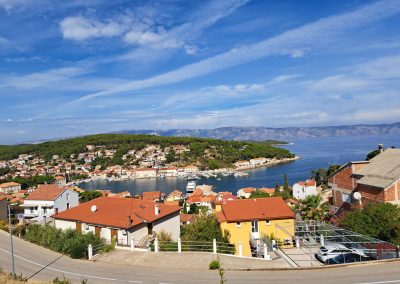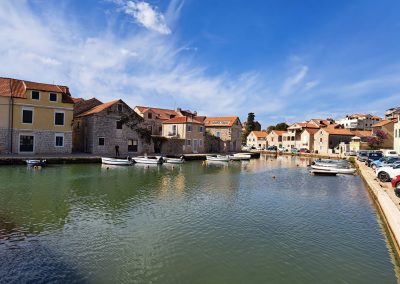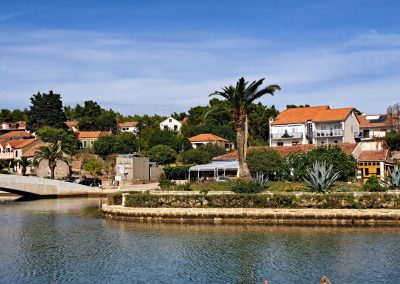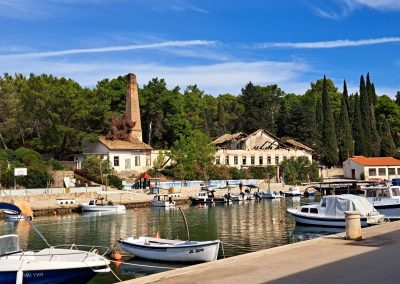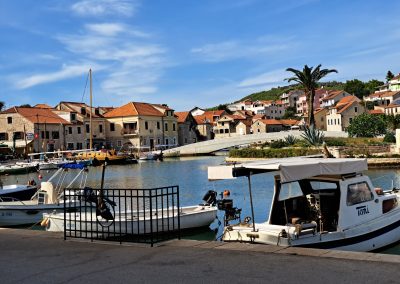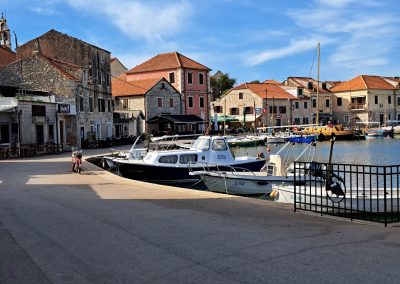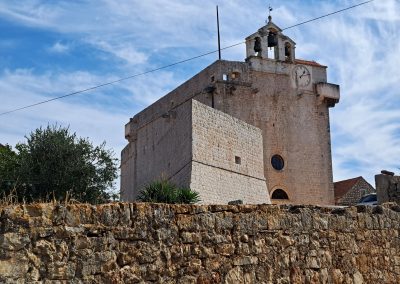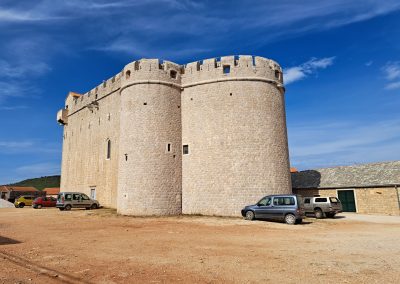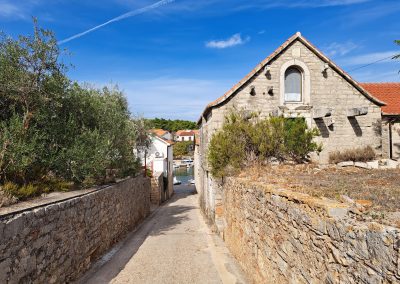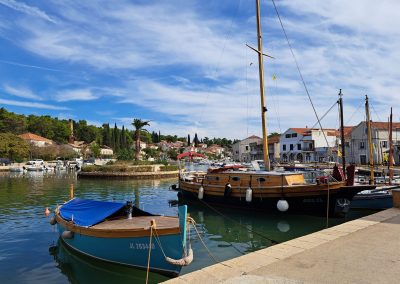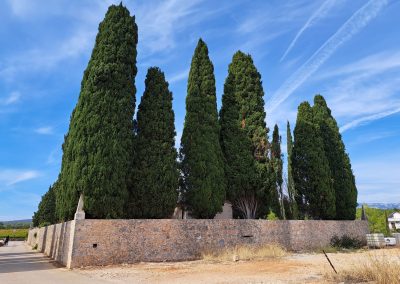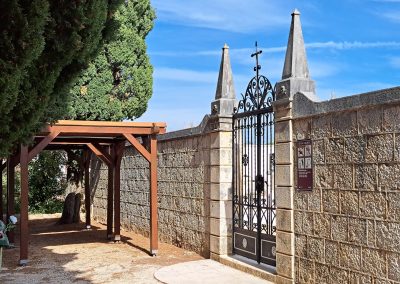Vrboska, island of Hvar
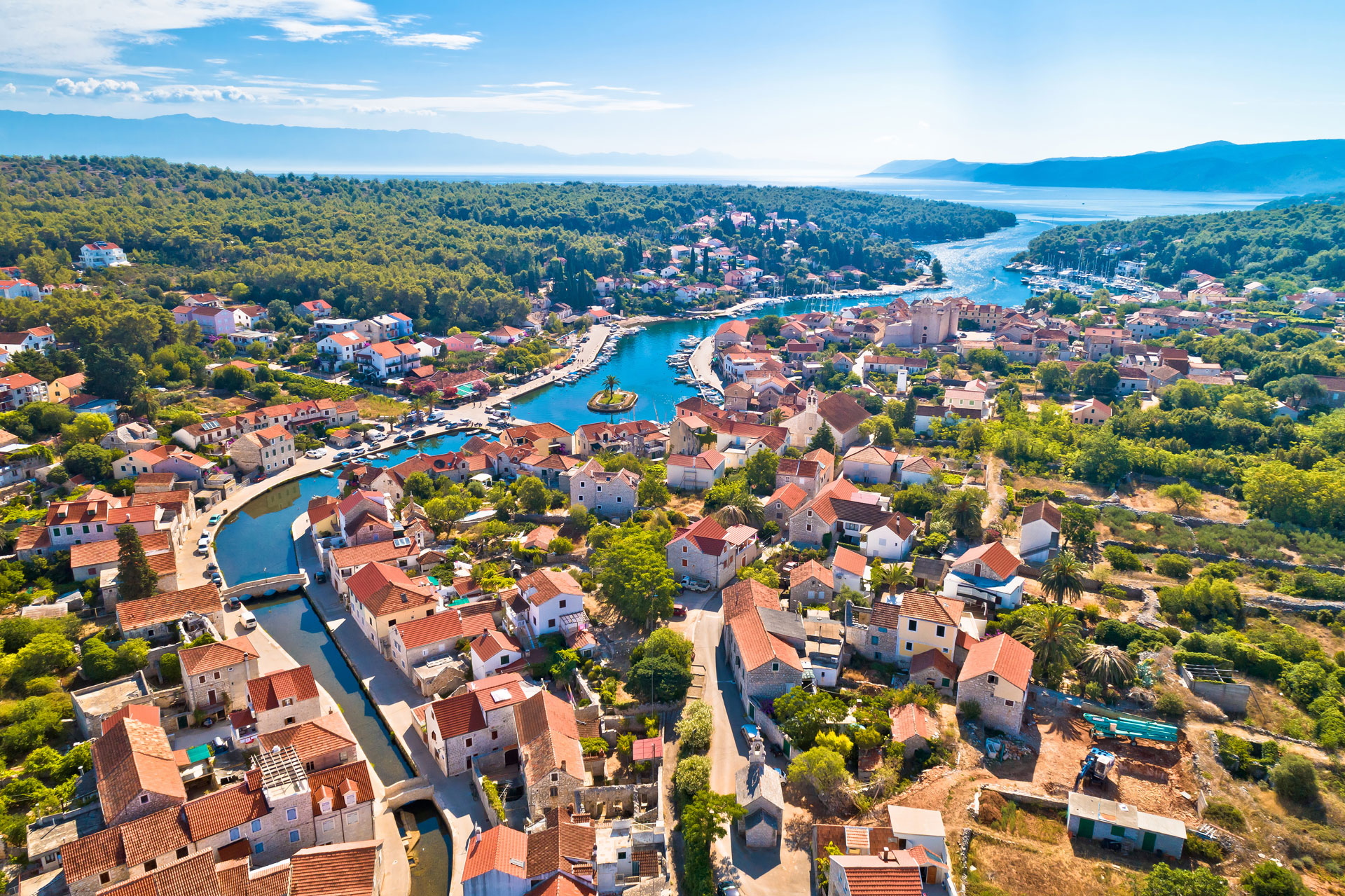
Vrboska
The first larger bay to the north, after Jelsa, became a fishing port in the 15th century, gradually developed by the people of Vrbanj and slowly built into a settlement. This very long and narrow bay, resembling a fjord, stretches for 4 km. Today, it hosts an ACI marina and has been shaped into a picturesque town surrounded by lush forests and greenery. On the opposite side, to the west of Vrboska, lies Stari Grad, and between them is the famous Starogrčki ager, which now features a small airport, the closest one to Vrboska.
During the uprising led by Matija Ivanić, who hailed from Vrbanj, Venetian galleys entered Vrboska and burned the Church of St. Lawrence. The Christian “dialogue” between the rich and the poor thus finds no concrete foundation in “Providence,” which always “arrives late” and serves as an after-the-fact commentary. The issue of being rich or poor in spirit becomes a problem of contextual tolerance, akin to “The Princess and the Pea.” Two centuries later, Venice rebuilt the Church of St. Lawrence, the saint who distributed church gold to the poor, this time in the Baroque style. The polyptych on the main altar was created by either Veronese or Titian, a truly lavish apology.
Among the sacred monuments in Vrboska listed in the Hvar Statute of 1331 is the Church of St. Peter, situated between Vrboska and Jelsa. After the Turkish invasion in the summer of 1571 and the burning of Vrboska, the unique fortified Church of St. Mary was built four years later, and in 1577, the Church of St. Roch was constructed.
Of historical significance in the Duboka bay are the remains of an ancient shipwreck.
Vrboska was founded as a fishing and shipbuilding community, with the essential addition of agriculture. It is also known for its refined aesthetic taste, earning it the nickname “Little Venice.”
The town is divided into the southern slope of the bay, the Pjaca area, and the western part, Podva, along the stream with its bridges, both small and large. Thankfully, there are also unbridgeable widths, as otherwise everything would turn into an endless expanse— a labyrinthine blindness of spiritual poverty, a flatness that seeks a STOPPED WORLD, STOPPED LIGHT, STOPPED CONSCIOUSNESS, ultimately an image of a PERFECT EXHIBIT around which no opinion is needed, nor any thought or new event.
The Fishermen’s Museum, with old fishing tools and equipment, showcases the relationship with the creatures of the “depths,” still akin to agriculture. The most interesting relationship with these creatures is the dialogue through the thin thread of the fishing line, with mutual “chances.” The greatest joy for a fisherman is when the fish pulls him into the sea, not when he catches the “golden fish” that fulfills wishes in a flat manner.
The Glavica peninsula is full of beautiful beaches, including Balun, Paklena, and Kamenjara, with the largest being Soline. There are also beaches for surfers and rockers, a nudist camp, and on the small island of Zečevo, a beach for naturists.
In 1900, Vrboska had 1,119 inhabitants, and in 2021, 542. The town’s patron saint is St. Lawrence, who in Jelsa transformed gold into beauty, as one does not live by bread alone… if it is available.
